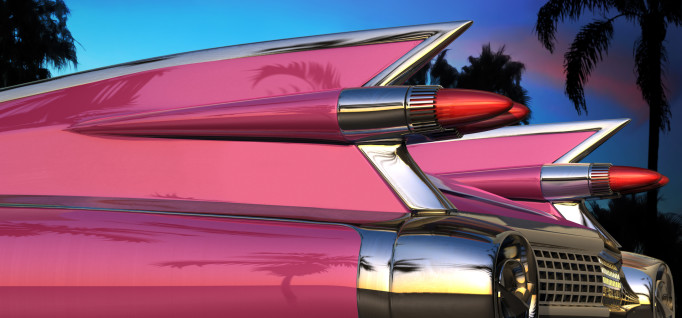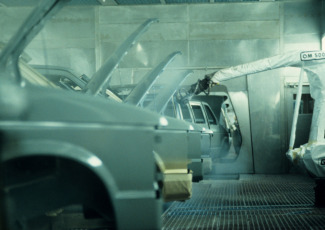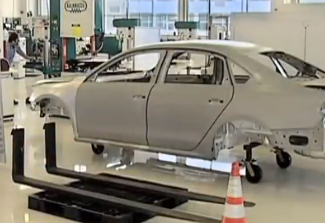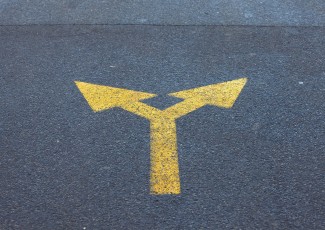Resurrecting a Dying Art in Automaking
By AACC Staff
June 4, 2015
Macomb Community College in Michigan is helping fill the community’s need for skilled digital sculptors with clay modeling experience.
Editor’s Note: This article, by James Melton, a media relations manager at Macomb Community College in Michigan, first appeared in the Community College Daily.
A lot has changed since the days when automotive design legends Harley J. Earl and Frank Hershey put tail fins on Cadillacs. But while the demand for clay modeling – the art of making three-dimensional design prototypes from malleable industrial plasticine – ebbed initially in favor of digital rendering, it has come roaring back.
“Computer-aided design has revolutionized design in amazing ways,” said Joseph Petrosky, dean of engineering and advanced technology Macomb Community College (MCC) in Michigan. “But, in some instances, nothing beats the ability to look at, walk around, touch and fine-tune the curves and angles on a clay model. Employers need staff with skills in both areas.”
A lost art in automaking
Finding skilled digital sculptors with clay modeling experience has become a challenge for automakers, auto suppliers and other employers because few design programs teach these skills. To help meet the demand, MCC, with campuses just outside Detroit, in August is launching a new digital sculptor associate degree program. It will be the only two-year degree program in southeast Michigan to include clay modeling in addition to digital design and milling.
The program was designed with industry input to ensure graduates have the knowledge and skills for entry-level positions in industrial design studios, according to the college. The average local entry-level salary for graduates of such programs is about $67,500.
‘From art to part’
Locally, General Motors Co. employs about 400 clay and digital sculptors at its Technical Center in Warren. With normal attrition, the company needs to hire an average of about 20 clay and digital sculptors per year for that facility alone, said William Mattana, senior manager of creative sculpting at GM. The company also uses clay and digital sculptors at a design studio in North Hollywood, Calif., and several facilities around the world.
Mattana, a journeyman model maker who has been a creative clay sculptor and supervisor of clay sculptors for 31 years, helped develop MCC’s curriculum. GM is also donating the clay for the classes.
The program is good for the community as well as for GM, Mattana said.
“Every aesthetic component of a car is designed on computers and modeled in clay prior to the creation of a prototype. We look for people who can support the design process from art to part,” he said.
The MCC program will help fill the talent pipeline more quickly than four-year programs, Mattana said. It also will train the kind of “triple threat” workers GM looks for – those able to do computer modeling, clay sculpting and also operate the computer-controlled milling machines used to create forms that are then refined by hand.
Another corporate partner
The clay modeling portion of the degree program will be taught at the Warren headquarters of transportation design firm ASC Inc., which hosted a pilot clay-modeling course for Macomb in 2014. At ASC, students will be taught by Macomb instructors with help from ASC staff who have been getting plasticine clay on their hands for decades.
The Macomb program fills a need because many of the best clay modelers are nearing the end of their careers, noted Joseph Bione, president and CEO of ASC. In some cases, companies depend on craftsmen who are past the traditional retirement age and often willing to work only part time.
“We see this partnership as a way to utilize some of our highly skilled artisans in ways that will serve our industry, the students, our clients and ourselves in a powerful way,” Bione said.
A hybrid skills approach
Lloyd VandenBrink, a Ford Motor Co. modeling manager who has been with the company for more than 20 years, was among those who helped develop curriculum for the digital sculptor degree. He said Ford has been enthusiastic about Macomb’s program from the beginning. Only a handful of schools currently teach clay modeling, he said, in part because of the perception that it would be replaced by digital processes.
“The pendulum has swung back and settled into a hybrid of digital and clay modeling,” VandenBrink said. “Some things are better if they are done digitally. Others are better if they are done with clay.”
VandenBrink said Ford’s Design Center currently employs between 100 and 200 modelers, including both physical and digital modeling.
From classroom to studio
Ariana Patriquin, 22, one of five Macomb students who participated in the pilot clay modeling class last year, said the experience “was a wonderful opportunity for me” and that her education at Macomb – which also included courses in 3-D animation and vehicle design – has already opened up new opportunities for her.
Since last July, Patriquin has worked full-time as a creative digital sculptor in GM’s Cadillac exterior design studio. She believes the work she completed in the clay-modeling course “gave my portfolio an extra edge” and probably helped her land the position.
Based on her experience, Patriquin said she is very interested in enrolling in Macomb’s new degree program.






